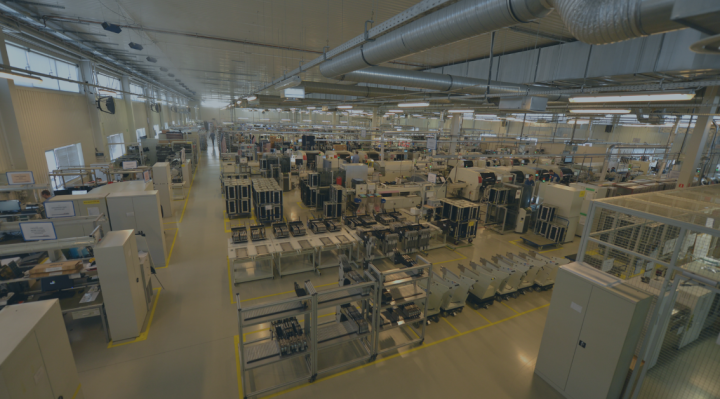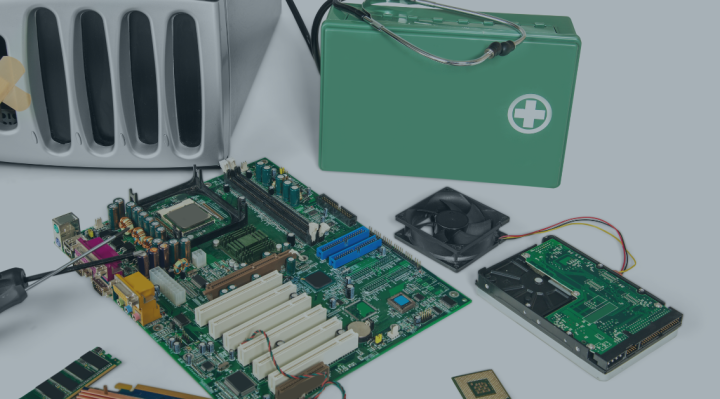Reducing manufacturing costs consists primarily of savings that will make it possible to reduce the price of the product for the end consumer and increase sales profits. Such savings can be invested in further development, while an entity is able to maintain and even increase its market position.
A penny saved is a penny earned, but there is no miracle formula how to reduce manufacturing costs. Rationalisation of financial outlays on electronics manufacturing should not be carried at the expense of the product quality, so it is better to focus on details: a few small optimisations can become a source of your profit.
1. Reducing manufacturing costs in the early design phase
Reducing manufacturing costs is easiest in the design phase. Electronics manufacturing is no exception here, so the sooner, the better. It is not worth delaying the analyses and introducing changes until the product is already in production. If you spend approx. 10 hours developing the process at its early stage, it can contribute to reducing manufacturing costs up to 50%. Introducing corrections at the end of the process, i.e. when we are already in the production stage, will take much more time, and can sometimes save ONLY 1% on the product price.
As an Original Equipment Manufacturer (OEM), when outsourcing your production to an Electronics Manufacturing Services (EMS) partner, you can ask your EMS for design support while your documentation is still in the beta phase. A contract manufacturer may submit comments on DFM (Design for Manufacturing) and in the field of material assessment. A specific material may look good in documentation, but its practical use or purchase may turn out to be complicated, problematic or ineffective, so that electronics manufacturing (the process of manufacturing a product) can be significantly extended and, as we all know, time is money.
2. Trust in relationships with suppliers
Running a business is not only about contracts, settlements and invoices. It is also the ability to develop trust-based relationships with suppliers that co-create the world of electronics manufacturing. The better your suppliers and contractors know you and your business, the more helpful they can be in terms of lead times and volume prices of necessary components. In this way, your electronics manufacturing also receives valuable substantive support: contractors are more willing to answer your questions, carry out specific tests for you, etc.
Therefore, your EMS will provide important support - even before electronics manufacturing goes beyond the planning phase: in the field of DFM and in selecting manufacturers and suppliers of components in the supply chain. In this aspect, a good contract electronics manufacturer will be able to provide substantial support, because it has many years of experience from working with Clients representing various industries, which can translate into valuable assistance in the development of your own products.
When deciding to do business with an EMS, choose a partner that invests in software-based management (including via an ERP system), with a low level of administration involved. As a result, its cost structure focuses on more efficient management through automation, thus reducing the focus on manual activities that do not add any value whatsoever.
3. The share of materials in the cost of the product
There is a direct relationship between the cost of a product and its size, volume and weight. Indeed, materials can account for 70% of the cost of a product or even more. The final cost depends on the maturity of the technology involved, the complexity of the product itself, and... the materials used. Therefore, whenever you can save on materials, you should approach reducing manufacturing costs in a reasonable way.
Lowering the quality of the materials from which your product is made, replacing them with cheaper equivalents, such as other grade of plastic or steel instead of more noble metals, should be designed in such a way that the product characteristics and functions do not deteriorate. It does not really matter if the screws inside the product are made of gold. This will not boost its performance, but it will definitely affect the cost.
Even the thickness of the PCB is an important feature that you should take care of as it has an impact on the cost of the final product. In addition to the quality of the material itself, also analyse related factors, such as lower volume, weight or size. As a result, you will reduce the size of the packaging, lower the shipping price, and bring down the storage costs.
Keep an eye on the materials market. New materials are launched all the time, and the technologies of their production are constantly improved, which means that their prices are gradually reduced, thus making the output electronics production more and more profitable.
4. Same function, same part, same solution.
Try to keep the list of items included in your BOM as short as possible. Check what you can condense. Maybe your BOM contains multiple types of screws or several types of resistors or power management systems. If their target function is going to be identical, use the same part instead of breaking your BOM list down into too many details. If the function is not the same, see if you can change it before electronics manufacturing begins and it will become difficult to introduce such changes.
Your EMS can support you in component engineering, including the DMF analysis, helping you choose alternative materials and optimal solutions (such as Lean or poka-yoke). When deciding to cooperate with a contract electronics manufacturer, do business with the one that will have the technical capabilities to assemble small components (e.g. type 0201) or know and have experience in such technologies as PoP (Package on Package) or pin-in-paste, which will intensify the automation of production.
5. Choosing a good contractor
Contract electronics manufacturing is a market with a large choice of EMS suppliers. While opting for the cheapest variant can be tempting, it is always worth considering other factors, such as lead times. If you agree on long lead times, the proper balancing of the ordered stocks can be difficult, and also foster the EMS’s inflexibility, for instance when the market potential of your product turns out to be higher than forecast and you would like to temporarily intensify your production.
Another equally important factor to consider is the quality of the information flow between you and your manufacturing contractors. Do they notify you of a problem as soon as it appears? Are they available to discuss plan changes or offer some flexible inventory management solutions?
The biggest contractor is not always the best one. Choose a contractor according to the size and scale of your business, and then you can be sure that they will treat you as their priority partner, rather than just a second-class cooperating business.
Learn which criteria is the most important for selecting PCB assembly service providers.






